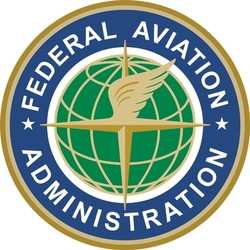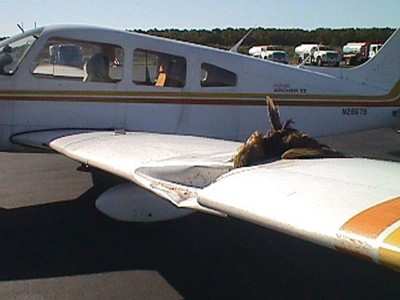Wed, Nov 09, 2011
Poster Campaign Focuses On Reporting Incidents
 The FAA recently launched a wildlife poster
outreach campaign for the GA community, including pilots, airport
sponsors, mechanics, engine manufacturers, students at aviation
schools, and aviation organizations, to increase wildlife strike
reporting among this important segment of aviation. For the last 50
years, the FAA has worked to reduce wildlife strikes at airports
and periodically conducts studies to gauge the effectiveness of its
program. The latest study shows that the general aviation
population accounts for only six percent of the total strikes
reported, which is more than 100,000 reports. Through increased and
concentrated educational outreach, the FAA hopes to close the
reporting gap between the more than 2,000 GA airports and
certificated airports that operate with an increased level of
safety and oversight.
The FAA recently launched a wildlife poster
outreach campaign for the GA community, including pilots, airport
sponsors, mechanics, engine manufacturers, students at aviation
schools, and aviation organizations, to increase wildlife strike
reporting among this important segment of aviation. For the last 50
years, the FAA has worked to reduce wildlife strikes at airports
and periodically conducts studies to gauge the effectiveness of its
program. The latest study shows that the general aviation
population accounts for only six percent of the total strikes
reported, which is more than 100,000 reports. Through increased and
concentrated educational outreach, the FAA hopes to close the
reporting gap between the more than 2,000 GA airports and
certificated airports that operate with an increased level of
safety and oversight.
This year’s poster “Report Wildlife Strikes”
depicts a caution sign with a bird inside and the simple message to
report wildlife strikes. Copies of the poster have been delivered
to the general aviation community and are designed to be placed in
highly-used areas such as training rooms and break rooms.
The FAA wants to hear from airport sponsors why reporting is low
and encourage them to work with the FAA to increase reporting and
reduce wildlife strikes. The strike information will tell the
airport sponsors and the FAA what types of wildlife are involved,
the amount of damage to the aircraft, and how many strikes occur at
general aviation airports annually. This information will allow the
FAA to help airport sponsors develop wildlife mitigation plans to
reduce wildlife strikes.

In addition to the poster outreach, the FAA encourages GA
airports to conduct a wildlife hazard assessment to help airport
sponsors understand and determine the wildlife hazards on their
airports. The FAA may support GA airports by making Airport
Improvement Program grants available to conduct an assessment.
The FAA remains committed to reducing wildlife strikes at the
nation’s airports through a myriad of options such as
technology, research, outreach, and partnerships. Mobile
application software h as been developed to make strike reporting
easier. Now, anyone can report a wildlife strike via the web or
their personal data device.
More News
Pilot Also Reported That Due To A Fuel Leak, The Auxiliary Fuel Tanks Were Not Used On June 4, 2025, at 13:41 eastern daylight time, a Piper PA-23, N2109P, was substantially damage>[...]
Have A Story That NEEDS To Be Featured On Aero-News? Here’s How To Submit A Story To Our Team Some of the greatest new stories ANN has ever covered have been submitted by our>[...]
From 2023 (YouTube Edition): Reflections on War’s Collective Lessons and Cyclical Nature The exigencies of war ought be colorblind. Inane social-constructs the likes of racis>[...]
Aero Linx: Colorado Pilots Association (CPA) Colorado Pilots Association was incorporated as a Colorado Nonprofit Corporation in 1972. It is a statewide organization with over 700 >[...]
High Speed Taxiway A long radius taxiway designed and provided with lighting or marking to define the path of aircraft, traveling at high speed (up to 60 knots), from the runway ce>[...]
 NTSB Prelim: Piper PA-23
NTSB Prelim: Piper PA-23 ANN FAQ: Submit a News Story!
ANN FAQ: Submit a News Story! Classic Aero-TV: One Mans Vietnam
Classic Aero-TV: One Mans Vietnam ANN's Daily Aero-Linx (07.03.25)
ANN's Daily Aero-Linx (07.03.25) ANN's Daily Aero-Term (07.03.25): High Speed Taxiway
ANN's Daily Aero-Term (07.03.25): High Speed Taxiway




